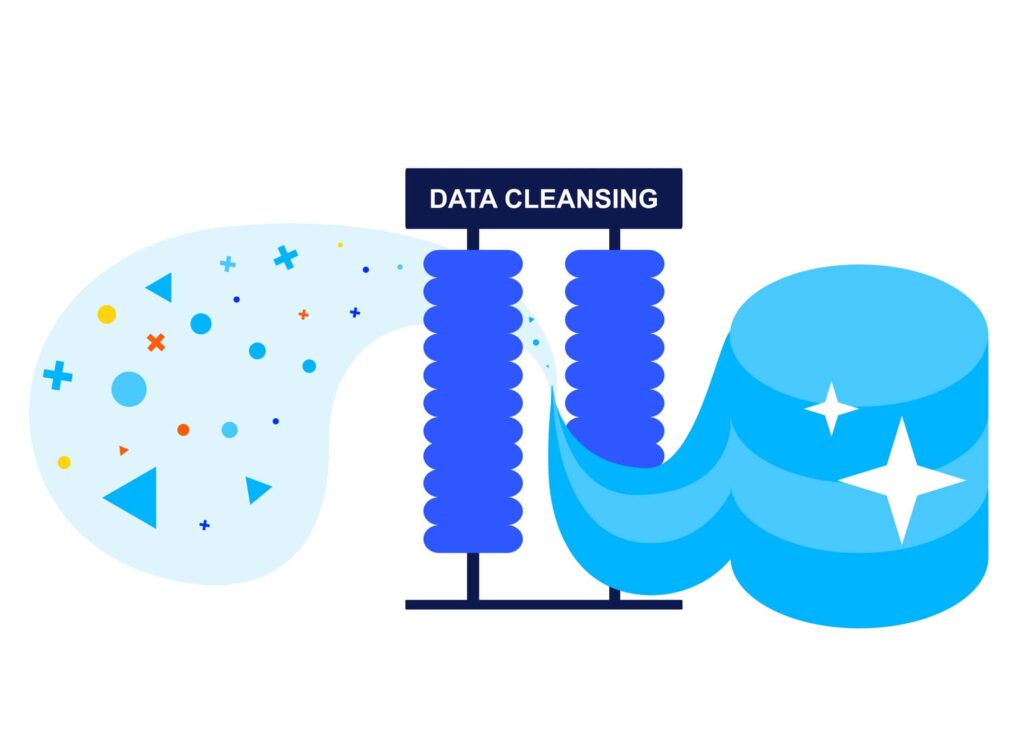Database normalization is the process of structuring data in a relational database to eliminate redundancy and enforce data consistency. This approach helps reduce storage waste and supports data integrity. This article explains how normalization works, its importance, and where it fits into database design.
Key Takeaways
-
Database normalization reduces data duplication, preserves integrity, and improves performance by organizing data into efficient structures.
-
Normal forms like 1NF, 2NF, and 3NF address different types of anomalies, improving scalability and simplifying maintenance.
-
In some cases, denormalization is used to improve query speed by reintroducing selective redundancy.
What Is the Role of Design in Database Structure?
Database design defines how data is organized, stored, and related within a system. It starts with identifying and structuring key data entities to reflect real-world relationships. Strong design ensures accuracy, efficient data handling, and consistent retrieval.
Design begins with data modeling, which creates a blueprint of the database using logical diagrams. This maps how entities relate and interact, setting the foundation for reliable data storage.
Normalization follows modeling. It restructures data into separate tables to remove redundancy and enforce consistency. Clear relationships between tables ensure that data changes in one area are reflected system-wide. This improves integrity and reduces storage waste.
Denormalization is applied when a faster query response is needed. It introduces controlled redundancy to minimize the cost of joins or lookups. This is common in read-heavy applications where performance outweighs storage efficiency.
Well-planned database design ensures consistency, minimizes waste, and scales with data growth. Structured systems adapt more easily to demand changes without requiring full schema overhauls.
What Is Database Normalization and Why Does It Matter?
Database normalization organizes data in relational systems to eliminate duplication and enforce integrity. It ensures that information is stored accurately and consistently by structuring related data into discrete, connected tables.
Normalization starts with a clear data model that reflects how data elements relate. This structure removes redundancy and improves consistency, making databases easier to maintain and scale.
First introduced by Edgar F. Codd, normalization is central to the relational model. It simplifies navigation, reduces complexity, and supports performance. Refining or redesigning schemas for normalization improves both the clarity and the reliability of stored data.
The process shapes database structures to reflect real-world relationships accurately. By creating loosely coupled systems, normalization enables cleaner data representation and supports better long-term data management.
How Does Normalization Address Data Redundancy?
Data redundancy occurs when identical data is stored in multiple places. This leads to inconsistencies, wasted space, and a higher risk of error.
Normalization fixes redundancy by separating data into logical tables with defined relationships. Each value appears once, eliminating unnecessary copies and reducing maintenance overhead.
Additional methods like compression and archiving also help reduce data duplication. Compression reduces storage size, while archiving moves infrequently accessed records to secondary storage, freeing space in the primary system.
Minimizing redundancy improves consistency, simplifies queries, and supports efficient storage. Addressing it is a foundational step toward optimized database design and improved system performance.
Why Is Database Normalization Important?
Normalization improves database performance, reduces redundancy, and ensures consistent data. It enforces structure and constraints by preventing common anomalies during data insertion, updates, and deletions.
Proper normalization addresses:
-
Unnecessary duplication
-
Inconsistent records
-
Inefficient storage
-
Complex maintenance
-
Slower queries and updates
Normalization improves accuracy and simplifies schema management by enforcing dependencies through integrity constraints.
Normalization also reduces storage costs. Removing redundant entries saves disk space and lowers the risk of data corruption. A normalized structure supports easier scaling, allowing systems to handle growing datasets without major redesign.
Unnormalized databases create problems—wasted storage, inconsistent results, and higher maintenance effort. Normalization fixes these by organizing data for reliable and predictable access.
How Does Normalization Help Maintain Data Integrity?
Data integrity ensures accuracy, consistency, and reliability within the database. It depends on strict control over how data is entered, stored, and related.
Normalization supports integrity by eliminating redundant entries and organizing data into clearly defined relationships. It reduces the chance of conflicting values and enforces consistent formatting across records.
Other integrity safeguards include:
-
Validation: Prevents errors during data entry
-
Primary keys: Ensure unique records
-
Foreign keys: Link related data between tables
-
Constraints: Enforce business rules and data accuracy
Data integrity is critical for making correct decisions based on stored information. Without it, databases risk storing corrupted or conflicting data, undermining trust and performance.
What Problems Does Normalization Solve in Databases?
Normalization eliminates redundant data and prevents structural issues during inserts, updates, and deletions. Without it, anomalies can occur, such as duplicated values, inconsistent records, and failed queries. Normalization improves consistency across the entire system by organizing data into logical tables and defining relationships.
Key anomalies addressed include:
-
Insertion anomalies – When you can’t add new data due to missing related entries
-
Update anomalies – When changes in one place are not reflected elsewhere
-
Deletion anomalies – When removing data leads to the accidental loss of related information
What Does First Normal Form (1NF) Require?
First Normal Form (1NF) requires that each field in a table holds only one value, no repeating groups or nested records. Each column must contain atomic, indivisible data. The table should have a clear structure, with unique column names and consistent data types across rows.
For example, in a movie database, storing multiple authors in a single field or across several columns violates 1NF. The correct approach is to separate movies and authors into two linked tables. This structure removes repetition and allows each author and movie to be maintained independently.
Applying 1NF ensures clean input, supports consistent operations, and prevents data duplication within the same table.
What Does Second Normal Form (2NF) Solve?
Second Normal Form (2NF) removes partial dependencies—cases where a non-key attribute depends on only part of a composite primary key. This form ensures that every non-key attribute depends on the entire primary key.
A table must first meet 1NF before it can be evaluated for 2NF. If a non-key attribute relies on just one column of a composite key, the structure must be separated. Doing so reduces redundancy and prevents update anomalies.
To achieve 2NF, move dependent attributes into new tables where they relate to the full primary key. This adjustment results in smaller, more focused tables and improves update efficiency. Fewer repeated values reduce errors during data changes.
How Does Third Normal Form (3NF) Improve Data Integrity?
Third Normal Form (3NF) removes transitive dependencies—where non-key attributes depend on other non-key attributes instead of directly on the primary key. This form ensures all attributes relate only to the primary key.
A table must meet 2NF before applying 3NF. If a field like “ProvinceName” depends on “CityName,” and “CityName” depends on the primary key, that’s a transitive dependency. To correct this, move “ProvinceName” into its own table linked by a foreign key.
Applying 3NF improves consistency and simplifies updates. Each non-key field has a clear relationship with the primary key, reducing the chance of conflicting entries and anomalies.
3NF is sufficient for most systems and significantly reduces duplication, inconsistency, and unnecessary storage use in relational databases.
Higher normal forms tackle deeper structural problems. Boyce-Codd Normal Form (BCNF) removes dependencies that don’t rely on a superkey. Fourth Normal Form (4NF) handles multivalued dependencies, and Fifth Normal Form (5NF) ensures data can be decomposed and rejoined without losing integrity. Sixth Normal Form (6NF) supports fine-grained temporal and statistical data accuracy.
What Is Boyce-Codd Normal Form (BCNF)?
Boyce-Codd Normal Form (BCNF) extends Third Normal Form by addressing edge cases where non-trivial functional dependencies still exist. It requires that every determinant in a table must be a candidate key.
BCNF removes structural flaws caused by dependencies between non-key attributes. These dependencies lead to inconsistent data and anomalies during updates or deletions. In BCNF, all non-key attributes rely only on candidate keys, not on other non-key fields.
To reach BCNF, database designers must identify violating dependencies and decompose tables. This process ensures that each table contains only relevant attributes with clear, direct dependencies. Applying BCNF strengthens data integrity and supports more accurate query results.
BCNF is often essential in systems with multiple candidate keys, where 3NF may not be strict enough to prevent redundancy.
What Are the Advanced Normal Forms Beyond BCNF?
Higher normal forms refine database structure by removing more complex dependencies. Each level addresses specific issues that simpler forms cannot resolve.
-
Fourth Normal Form (4NF) eliminates multivalued dependencies. A table reaches 4NF when no non-trivial multivalued dependency exists unless it involves a candidate key. This prevents data duplication caused by storing multiple values in a single field or record.
-
Fifth Normal Form (5NF) supports lossless decomposition. It ensures that a table can be split into smaller tables and then recombined without introducing errors or losing information. This is critical for systems with complex joins and relationship mappings.
-
Sixth Normal Form (6NF) applies to scenarios where temporal or statistical changes must be captured with high precision. It breaks down data to its smallest possible units and is used in advanced analytics or auditing systems.
Each level plays a specific role in reducing redundancy, improving structure, and increasing reliability. Choosing the appropriate level depends on the complexity of the system and the data relationships being managed.
How Does Normalization Improve Performance and Maintenance?
Normalization improves query performance by reducing the volume of redundant data scanned during retrieval. In structured environments such as e-commerce platforms, separating tables for customers and products ensures faster access and greater consistency.
Normalized databases reduce storage use and prevent inconsistencies by storing data only once and using keys to maintain relationships. Fewer duplicates lower costs and improve processing speed by minimizing unnecessary reads and writes.
Normalized structures also simplify updates. With fewer places to change data, modifications become faster and more accurate. A smaller, well-organized schema makes automation easier and reduces manual tasks during maintenance.
Normalization supports scalability. New records or tables can be added with minimal disruption to the system’s structure. This keeps the database agile as workloads and data volumes grow.
What Are the Trade-offs of Over-Normalization?
Excessive normalization can lead to complex schemas with many dependencies, making development and troubleshooting harder. Tables become fragmented, requiring more joins to retrieve related data.
More joins increase disk reads and network traffic, especially in high-load environments. This can lead to slower queries and reduced performance if not carefully managed.
Highly normalized databases may also become harder to use. Abstract structures can make it difficult to form queries or understand data relationships without technical oversight.
To address this, selective denormalization is sometimes used. Copying key data into frequently accessed tables can reduce query time and support performance during peak usage.
Balancing normalization with real-world performance needs ensures that the system remains efficient, reliable, and scalable without becoming too complex.
How Is Normalization Applied in Real-World Systems?
In e-commerce platforms, normalization structures data into separate tables for customers, products, and orders. This eliminates duplication and ensures each value is stored in only one place. Composite keys help manage edge cases, such as users with identical names but different addresses.
In banking, normalized databases separate customers, accounts, transactions, and loan data. This structure improves consistency and supports compliance with financial regulations.
Healthcare systems use normalization to manage patient data, prescriptions, and treatment records. Separating this information ensures privacy and accuracy in billing while keeping medical records consistent across services.
In content management systems, normalization keeps authors, categories, and tags in separate tables. Updates to one item reflect across all linked content, reducing errors and improving efficiency.
These examples show how normalization strengthens data quality, reduces redundancy, and improves scalability across different sectors.
What Does Industry Research Say About Normalization and Database Management?
Gartner reports a steady move toward cloud-based database systems, increasing the need for strong data management practices. Repeated data across systems causes slower performance, higher processing loads, and excessive storage use.
IDC research confirms that effective database management is essential for enterprise scalability and system reliability. Studies from IBM and Oracle show that structured normalization improves data accuracy, reduces redundancy, and enhances system efficiency.
These findings support the continued use of normalization as a best practice for maintaining scalable, high-performing databases.
Why Use ScaleGrid for Managing Normalized Databases?
ScaleGrid simplifies database normalization by helping administrators reduce duplication and maintain structure through clear separation of data. By isolating related data into individual tables, ScaleGrid prevents overlap and supports cleaner updates.
Built-in optimization tools help enforce consistent design while real-time monitoring identifies anomalies quickly. These features improve normalization efforts without requiring constant manual adjustments.
ScaleGrid offers managed hosting that supports advanced normalization practices and improves long-term system performance. Businesses benefit from fewer errors, smoother queries, and simplified maintenance.
What Are the Key Takeaways on Database Normalization?
Normalization improves integrity, accuracy, and performance by organizing data and removing duplication. Each step—from 1NF to BCNF and 5NF—builds a stronger foundation for scalable relational systems.
Normalized structures reduce processing time, prevent anomalies, and make databases easier to manage. These advantages are especially valuable in systems with high data volume or complex queries.
ScaleGrid provides the infrastructure and support required to implement normalization successfully. With real-time monitoring, automated backups, and expert guidance, ScaleGrid helps teams reduce workload and improve database efficiency.
Try ScaleGrid for free to apply best database design practices and confidently scale your systems.








